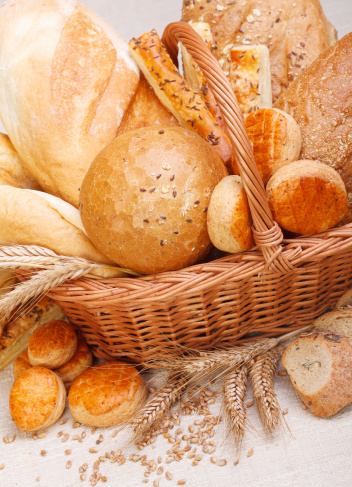baking ENZYMES


Consumption of baked foods can be traced back to as one of the most common and widely used foods worldwide. Since the dawn of technology, Enzymes have always played an important part in manufacture of baked foods such as Bread, Buns, Biscuits and Rolls etc. Baking Enzyme such as Fungal Amylase were used in the past years for manufacture of these baked food products, however due to progress in the consumer market of these products, manufacturers have diversified into various products having diverse properties and attributes.
This has resulted in wide varieties of flours and processes being used for manufacture of different baked food products, each having different properties than another. Thus flours and processes are different in one part of the world from another. From here arises the need for further enzymes for baking industries.
The basic chemistry of dough making contains ingredients such as flour, yeast, sugars, fats & oils etc. The flour is made of up of natural products as Starch, Proteins such as Gluten, Polysaccharides other than Starch, basic Tri-glycerides in the form of various naturally occurring fat and oils. The process of dough making initiates the action of Yeast which acts on naturally occurring sugars in the dough, thus releasing alcohol and carbon dioxide which results in the dough formation and rising.
Thus it is imperative that to further catalyze this reaction of Yeast action, a constant supply of sugar is needed, else this process will come to a halt. The level of fermentable sugar in the dough is limited, thus an external addition of sugar is required. Here comes the use of enzymes in baking process. Fungal Amylase Enzymes hydrolyze the starch matter of the flour and release dextrins. The Yeast processes this dextrins and converts them to glucose, thus sugar is naturally produced.
In flour mills the same theory as mentioned above is followed for addition of Fungal Amylase Enzymes during flour mill stage. Adding enzymes to the flours gives benefits such as a standardized quality of flour for use in baking. Flours with pre-added Fungal Amylase Enzymes, will give properties of Dextrin release when the dough is processed for baking, thus giving constant supply of natural sugars to the Yeast for the fermentation processes. Addition of Baking Enzymes instead of external sugar provides for the constant supply of Dextrins to the Yeast in required proportions needed for the process.
Apart from the basic use of Fungal Amylase Enzymes, various other Baking Enzymes such as Fungal Protease Enzymes, Fungal Lipase Enzymes and Fungal Xylanase Enzymes also find application in Baking process. These enzymes hold the structure of the dough during the dough fermentation process and add to various benefits and quality to the finished product.
Fungal Protease Enzymes are widely used in manufacturing of biscuits and crackers since the flour and dough needed to produce these baked products should be soft for easy handling. The gluten, which is a naturally occurring protein in flours, give a strong structure to the dough thus in turn makes handling very difficult. Fungal Protease Enzymes hydrolyze the protein matter of the dough, thus weakening it and resulting in softness. An added advantage of this process is that flours from various sources can be used, which contain high gluten, since Protease Enzymes can be employed to solve the issue of hardness by weakening this gluten content. For various applications Bacterial Protease enzymes are also used since they operate at near neutral pH levels.
Fungal Lipase Enzymes are also used during flour mill or dough making stage to hydrolyze the naturally occurring fat and oil matter present in the flours. Various chemical emulsifiers are added to the dough to improve handling and various other properties of the dough. Fungal Lipase Enzymes hydrolyze the tri-glycerides to yield fatty acids and glycerol which is a natural emulsifier.
And finally Polysaccharides other than Starch are a part of the composition of various flours. They form the structure of the dough just like Glutens. These are needed to be hydrolyzed so as to effect the production of a loaf structure which has bigger volume and crumb. Fungal Pentosanase and Glucose Oxidase Enzymes can be used during the Flour mill stage or prior to the dough making stage so they hydrolyze the Hemicellulose and present in the flours and for replacement of bromate.
baking ENZYMES


